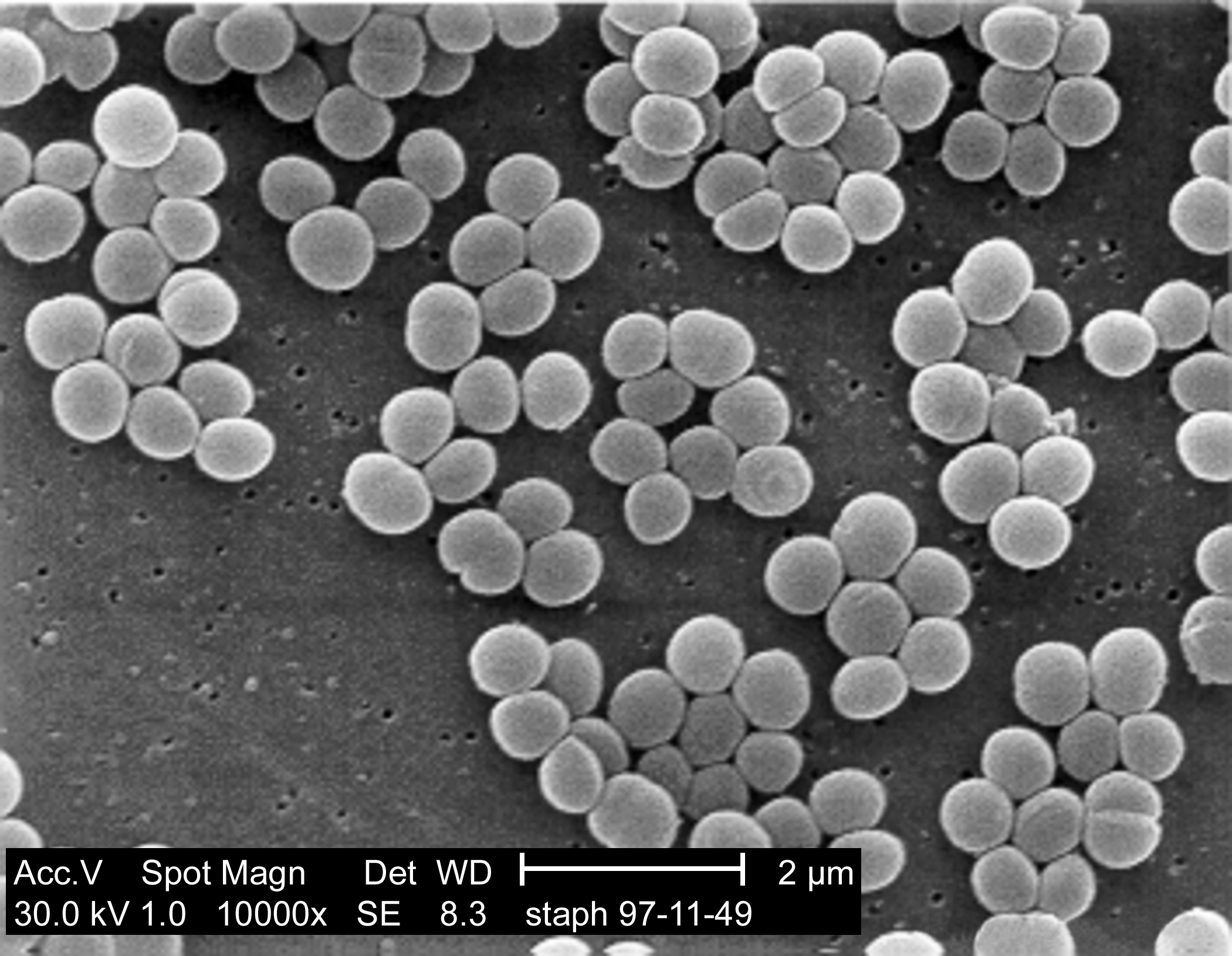
Scanning electron microscope picture of clusters of Staph aureus
However medical scientists aren't the only ones trying to kill bacteria, virus's known as bacteriophages are also interested in breaking open bacterial cells and they do it using a cocktail of different enzymes to break open the cell wall. Many of these enzymes feature a two-domain structure with bacteria-specific cell wall targeting and catalytic domains. The enzymes Lst was found to be particularly good at breaking apart Staph aureus cell walls with one end of the enzyme (C terminus) recognising and binding to the bacterial cell wall while the other end (the N terminus) breaks the protein bridges between the sugar componants of the peptidoglycan layer, which is a major componant of the cell wall.
Work from the Rensselaer’s Center for Biotechnology has been looking at incorporating these enzymes into nanofibres to create stable bactericidal paint films. The molecular-level curvature of carbon nanotubes stabilizes a wide range of enzymes and the lab was able to successfully create Lst-containing nanocomposite films which achieved >99.9% killing of MRSA upon contact within 2 h. They also explored incorporating these into a latex paint, which retained the bactericidal properties of the nanofibres. This paint could theoretically be spread over hospital surfaces to reduce the numbers of Staph aureus within the hospital environment. Incorporating this enzyme into the nanofibres (rather than directly mixing with the latex) gives added stability and helps the enzyme stay within the coating for longer. Films which were stored dry at room temperature showed >99% bactericidal activity against S. aureus after 30 days.
It remains to be seen how effective this technique will be outside of a laboratory setting but at the moment it looks like a highly promising step to help reduce the incidence of a dangerous pathogen. The speed and likelihood of resistance also remains to be seen, but it's heartening that bacteriophages have been using these enzymes against the bacteria for far longer than we've been using antibiotics. This is unlikely to be any kind of magical anti-MRSA cure, but it could certainly be very useful in helping to reduce the incidence of the disease.
---
Pangule RC, Brooks SJ, Dinu CZ, Bale SS, Salmon SL, Zhu G, Metzger DW, Kane RS, & Dordick JS (2010). Antistaphylococcal nanocomposite films based on enzyme-nanotube conjugates. ACS nano, 4 (7), 3993-4000 PMID: 20604574
---
Follow me on Twitter!



















2 comments:
Cures aren't the only thing worthwhile in medicine. Preventing people from getting sick in the first place is better than a cure for the lucky ones. Plus, for the unlucky, having (for instance) 75% fewer cases would give Staph strains less opportunity to gain immunity, meaning easier cures for most who do catch it. Cutting down infections during hospitalization would also mean faster recoveries so that resources can be offered to more patients. Altogether a good thing.
Thanks for the comment! I definitely agree that reducing the incidence of a disease is a very good thing, it possibly doesn't show through in the post but I was incredibly excited when I read about this research, I think the sooner it could get into hospitals the better.
I think my last paragraph was just me being cautious - the media tends to jump on anything useful as "we've cured/stopped/defeated MRSA!" and I was trying not to perpetuate that.
Post a Comment